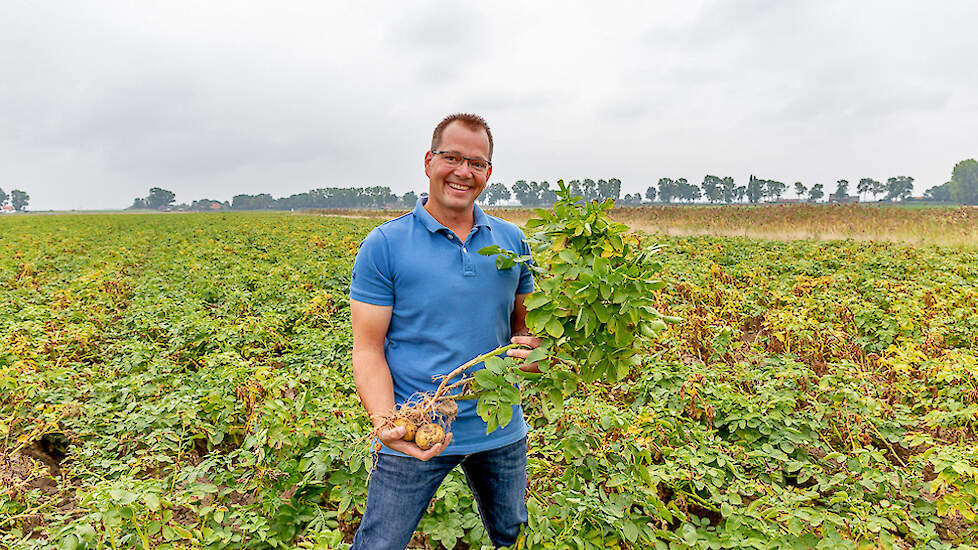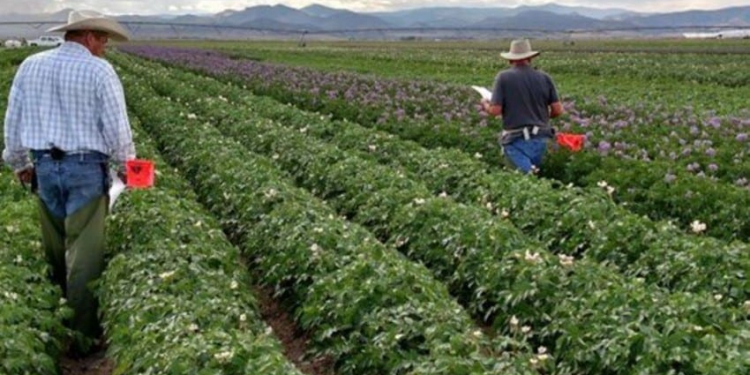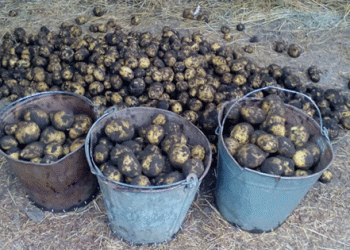Tackling the virus in seed potato cultivation requires a system approach

Seed potato growers seem to have lost control of virus completely. Declassification rates of more than 30 percent have been more the rule than the exception in recent years. Technical advisor Fokke Smit from Certis and crop protection specialist Jan-Willem Scherpenisse from Van Iperen argue for a comprehensive plan of attack to turn the tide. “Clean seed potatoes and a timely start with Olie-H are a must,” says Scherpenisse.
The figures from the NAK inspection service speak volumes: more than a third of the seed potato volume has been reduced in class in recent years due to virus infections, making it a bigger problem than bacterial disease. “Seed potato growers are aware of this”, Fokke Smit notes. “In conversations they say that they are doing everything they can, but are nevertheless unable to get rid of the virus problem. After questioning, it often appears that their approach can be improved on certain points. Prevention deserves even more emphasis. Even approved starting material is not always free from Y virus. A clean plot and clean seed potatoes are the first requirements in the fight against virus, followed by cultivation measures. ”
Clean plot, economical with nitrogen
Start cultivation free from potato storage and weeds. Weeds can also be host plants. Clear this well before planting, otherwise the lice will have an attractive landing place in the first spring flight. With basic fertilization, be moderate with nitrogen. Excess gives a strong growth impulse and a relatively large number of young, green leaves, which aphids find very attractive. Another measure that can reduce the louse pressure is to sow a barrier crop next to the seed potato plot. Wheat is very suitable for this, because it remains green and attractive to aphids for a long time. Last but not least , experts point to the possibility of alternating virus-sensitive seed potato varieties with virus-resistant varieties.
Start early with Olie-H
A frequently asked question is when exactly to start spraying. “My message is: start on time with Olie-H, when 20 to 25 percent of the plants have emerged. Certainly not later. Why? Because then there are already attractive plants on their backs for the first flying lice, which they can infect with viruses. If you don’t tackle them, you will already have the first sources of infection in your crop. Make no mistake about the growth rate either. If it is 20 to 25 percent above, it can be more than 50 percent within a few days, ”says Jan-Willem Scherpenisse.
“Proper prevention requires a short interval of 3 days between the first and second spraying with Oil-H”, Smit adds. “Lice were already present before the emergence of potatoes last year. The early warnings in sugar beets are clear proof of this. In addition, modern sprayers are suitable for precise spraying. That is especially efficient in the period of emergence. Good experiences have already been gained with this in practice. ”
Prevent lice population
“ In addition to Oil-H, to prevent virus transmission, you will regularly have to use an insecticide such as Gazelle to suppress population growth,” says Smit. “When you switch to a different substance, choose one from a different chemical group. A measure that no seed potato grower should forget is consistent selection. Start on time and remove all sources of infection as accurately as possible. Anyone who closely follows this system approach must be able to keep their seed potato cultivation virtually virus-free. ”
Professional magazine

The trade magazine provides you with in-depth and high-quality articles that provide more insight into current and future developments in Dutch and foreign arable farming. More about the trade magazine









